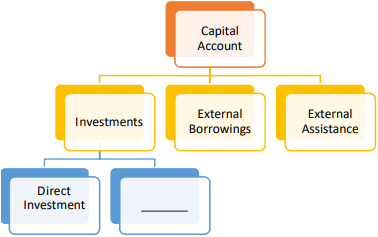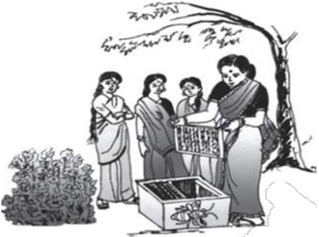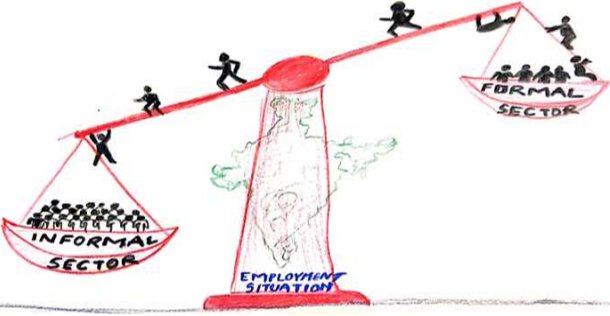
myCBSEguide App
Download the app to get CBSE Sample Papers 2023-24, NCERT Solutions (Revised), Most Important Questions, Previous Year Question Bank, Mock Tests, and Detailed Notes.
Install NowCBSE class 12 economics sample paper 2024 is available for free download on myCBSEguide App and Student Dashboard. This year too CBSE has made some big changes in the typology of questions. Now Class 12 Economics will have subjective-type questions as well as objective questions.
Major Changes in Class 12 Economics Paper
Class 12 Economics model question paper has some changes this year. These are
- There are some Statement based questions
- Assertion and Reason type questions are also given
- CBSE is asking a few analytical graph-based questions too
- The last case study question is too lengthy
Download Economics Sample Paper 2023-24
This is only one sample question paper with a solution. We at myCBSEguide have 10+ such sample papers, chapter-wise test papers, online tests, practice questions and related study material that you can download using below button:
You can also follow the links below to access more content on CBSE class 12 Economics.
Class 12 Economics Sample Paper 2023-24
CBSE Class 12
Economics (Code No. 030)
Sample Paper (2023-24)
TIME: 3 HOURS
M.M. – 80
GENERAL INSTRUCTIONS:
- This question paper contains two sections:
Section A – Macro Economics
Section B – Indian Economic Development - This paper contains 20 Multiple Choice Questions of 1 mark each.
- This paper contains 4 Short Answer Questions of 3 marks each to be answered in 60 to 80 words.
- This paper contains 6 Short Answer Questions of 4 marks each to be answered in 80 to 100 words.
- This paper contains 4 Long Answer Questions of 6 marks each to be answered in 100 to 150 words.
SECTION A – MACRO ECONOMICS
- Read the following statements carefully:
Statement 1: Consumption function assumes that, consumption changes at a constant rate as income changes.
Statement 2: Autonomous consumption is the ratio of total consumption (C) to total income (Y).
In light of the given statements, choose the correct alternative from the following:- Statement 1 is true and Statement 2 is false.
- Statement 1 is false and Statement 2 is true.
- Both Statements 1 and 2 are true.
- Both Statements 1 and 2 are false.
- For a closed economy (with no foreign trade), which one of the following is correct?
- GDP = GNP
- GDP > GNP
- GDP < GNP
- GDP + GNP = 0
- The value of ________ can be greater than one. (Choose the correct alternative to fill up the blank)
- Marginal Propensity to Consume
- Average Propensity to Consume
- Marginal Propensity to Save
- Average Propensity to Save
- As per the Reserve Bank of India (RBI) press report, dated 29th December, 2022: “Net external commercial borrowings to India recorded an outflow of US$ 0.4 billion in the second quarter (2022-23)”
The above transaction will be recorded in the ________ account on ________ side of Balance of payments account of India.- current, credit
- current, debit
- capital, credit
- capital, debit
- “The value of all goods and services can be expressed in monetary units.” On the basis of the given statement, identify the function performed by money:
- Medium of exchange
- Store of Value
- Unit of account
- Means of standard of deferred payments
- Find the missing figures and choose the correct alternative:
Round Deposits Loans (80%) Reserve Ratio (20%) I 1,000 800 200 II 800 ____(i)____ 160 … … … … … … Total ____(ii)____ ____(iii)____ ____(iv)____ Alternatives:
- 640,1000,4000,5000
- 960,5000,4000,1000
- 640,4000,1000,5000
- 640,5000,4000,1000
- Graphically, Aggregate Demand function can be obtained by vertically adding the ________ and ________ function. (Choose the correct alternative to fill up the blanks)
- consumption, saving
- consumption, investment
- investment, saving
- aggregate supply, consumption
- Identify the correct reason(s) that may affect the demand for foreign exchange in an economy.
I. Imports of visibles
II. Exports of invisibles
III. Remittances by residents working abroad
IV. Purchase of assets abroad
Alternatives:- I and II
- II and III
- III and IV
- I and IV
- Suppose for a given economy,
S = -60 + 0.1Y
I = ₹4,000 crore
(Where S = Saving Function, Y = National Income and I = Investment Expenditure) Equilibrium level of Income would be ₹ ________ crore.
Alternatives:- 4,000
- 40,000
- 40,600
- 60,400
- Read the following chart carefully and choose the correct alternative:

Alternatives:- Interest received on loans
- Multilateral Loans
- Portfolio Investment
- Government Aid
- ‘Current account deficit in an economy must be financed by a corresponding capital account surplus’.
Do you agree with the given statement? Give valid reason(s) in support of your answer. - (A) On the basis of the given data, estimate the value of Domestic Income:
S. No. Items Amount (₹ in crore) i. Household Consumption Expenditure 600 ii. Gross Fixed Capital Formation 200 iii. Change in stock 40 iv. Government Final Consumption Expenditure 200 v. Net Exports (-)40 vi. Net Indirect Taxes 120 vii. Net Factor Income From Abroad 20 viii. Consumption of Fixed Capital 40 OR
(B) State the meanings of the following:
- Externalities
- Operating Surplus
- Consumption Goods
- For a hypothetical economy, the government incurs an investment expenditure of ₹1,000 crore. If the value of Marginal Propensity to Save (MPS) falls from 0.25 to 0.10.
Calculate the value of increase in income due to change in the value of Marginal Propensity to Save (MPS). - (A) “In an economy, ex-ante Aggregate Demand is more than ex-ante Aggregate Supply.” Elaborate the possible impact of the same, on the level of output, income and employment.
OR
(B) “With an objective to reduce inflation, Reserve Bank of India may promote the commercial banks to park their surplus funds with it.”
Discuss the rationale behind the step taken by the Reserve Bank of India. - Elaborate the ‘Banker’s Bank and Supervisor’ function performed by the Reserve Bank of India.
- On the basis of the given information, calculate the value of:
- Fiscal deficit
- Primary deficit
S.No. Items 2021-22 (₹in crore) (i) Revenue Receipts 20 (ii) Capital Expenditure 15 (iii) Revenue Deficit 10 (iv) Non-debt-creating capital receipts 50% of revenue receipts (v) Interest Payments 4
- State any two features of public goods.
OR
- Explain the economic stability objective of Government Budget.
- ‘Under the Ayushmaan Bharat Scheme, the Government provides free medicines to the economically backward section of the society’.
Identify and discuss the nature of the government expenditure indicated in the given statement
- On the basis of the given information, calculate the value of:
- Giving valid reasons, explain how the following would be treated while estimating domestic income?
- Payment made by American tourist for goods purchased in India.
- Tomatoes grown by Ms. Puja in her kitchen garden.
- “Machine purchased by a firm is always a capital good.” Do you agree with the given statement? Give valid reasons for your answer.
- Giving valid reasons, explain how the following would be treated while estimating domestic income?
SECTION B – INDIAN ECONOMIC DEVELOPMENT
- Identify the correct combination of the ‘Goals of Indian Five Year Plans’:
- Growth, Equality, Modernisation, Self-Reliance
- Development, Equality, Modernisation, Sustainability
- Good Health, Education, Modernisation, Sustainability
- Growth, Equity, Modernisation, Self-Reliance
- ‘China has performed exceedingly well in various health and economic indicators’. Identify which of the following is not a health indicator?
- Infant Mortality Rate (per 1000 live births)
- Life Expectancy at Birth (years)
- Percentage of people below poverty line (National)
- Maternal Mortality Rate (per 1 lakh births)
- The shackles of agriculture during the colonial rule were permanently broken by the Green Revolution that resulted from the application of ________. (Choose the correct alternative to fill up the blank)
I. High Yielding Varieties (HYV)
II. Mechanization of Agriculture
III. Chemical Fertilizers and Pesticides
IV. Organic Fertilizers and Pesticides
Alternatives:- I, II, IV
- I, II, III
- II, III, IV
- I, III, IV
- Study the following picture and answer the given question:

Women in rural households take up bee-keeping as an entrepreneurial activity. Such kind of activities may be envisaged under ________ as diversification activity.- Animal husbandry
- Fisheries
- Horticulture
- Poultry
- Read the following statements: Assertion (A) and Reason (R). Choose the correct alternative from those given below.
Assertion (A): In 1991, as an immediate measure to resolve the Balance of Payments crisis, the rupee was devalued against foreign currencies.
Reason (R): Devaluation of currency was eminent, exchange reserves.
Alternatives:- Both Assertion (A) and Reason (R) are true and Reason (R) is the correct explanation of Assertion (A).
- Both Assertion (A) and Reason (R) are true, but Reason (R) is not the correct explanation of Assertion (A).
- Assertion (A) is true, but Reason (R) is false.
- Assertion (A) is false, but Reason (R) is true.
- Under ________ in China, farmers and industrial units were required to buy and sell fixed quantities of inputs and outputs on the basis of prices fixed by the government and the rest were purchased and sold at market prices.
- Commune System
- Great Leap Forward
- Dual Pricing
- Great Proletarian Cultural Revolution
- Micro credit programmes play a vital role in ensuring an overall development of the rural economy as they ________. (Choose the correct alternative to fill up the blank)
(i) provide financial support
(ii) lead to women empowerment
(iii) enhance the reach of formal credit system
Alternatives:- (i) and (ii)
- (ii) and (iii)
- (i) and (iii)
- (i), (ii) and (iii)
- ________ may be defined as the measure of the extent of demographic participation in the social and political decision making.
- Economic indicator
- Liberty indicator
- Health indicator
- Demographic indicator
- Read the following statements carefully:
Statement 1: The nature of unemployment problem in India is uni-faceted.
Statement 2: Worker-Population ratio is an indicator used for analysing the employment situation in a country.
In light of the given statements, choose the correct alternative from the following:- Statement 1 is true and Statement 2 is false.
- Statement 1 is false and Statement 2 is true.
- Both Statements 1 and 2 are true.
- Both Statements 1 and 2 are false
- From the set of the events given in column I and corresponding facts given in Column II, choose the correct pair of statements:
Column I Column II (A) Adoption of mixed economic system (I) The common development policy of India and China (B) Introduction of economic reforms in China (II) Imposed by World Bank (C) Great Leap Forward Campaign (III) Focussed on massive industrialization (D) First Five Year Plan of Pakistan (IV) Announced in 1953 Alternatives:
- A-I
- B-II
- C-III
- D-IV
- (A) “During the colonial period, a number of socio-economic indicators were in a dilapidated state.”
List any three such indicators that led to the worsening of India’s demographic profile.OR
(B) “The pre-independent India’s occupational structure experienced growing regional variation.”
Justify the above statement with valid explanation. - “Ravya was initially working as an office clerk in a firm. In the pursuit to attain, a higher position and income, she attended a few on-the-job training sessions. These sessions contributed positively to her skills and expertise.”
Explain the impact of Ravya’s decision on human capital formation. - “In the late 1970s, China introduced the One-child policy that led to arrest in the population coupled with skewed sex ratio.”
Justify the given statement with valid arguments in support of your answer. - State and elaborate whether the following statements are true or false, with valid arguments:
- Agricultural marketing is a process that ensures the transportation of various agricultural commodities only.
- Jan-Dhan Yojana has been a crucial step for financial resource mobilization in the Indian economy.
OR
“Since independence, the government has been playing an important role in generating employment directly or indirectly.” Discuss.
- Identify the situation depicted in the given image. Suggest the impact of the indicated situation, on the Indian economy.

- Green revolution transformed India from a subsistent food grain economy to a food surplus economy.”
Justify the statement, giving reasons in support of your answer. - “In order to protect domestic industries, India followed the regime of restrictions on imports.”
Briefly outline and discuss such steps taken by the government to promote import substitution policy.OR
- “In India, after 1947 land reforms were introduced on a large scale.” In the light of the given statement, discuss any one such land reform.
- “In the post-reform period, the Government of India decided to retain profit-making Public Sector Undertakings (PSUs). It provided a special status to PSUs to enable them to expand in the global market.” Do you agree with the given statement? Give valid reasons in support of your answer.
- Green revolution transformed India from a subsistent food grain economy to a food surplus economy.”
- Read the following text carefully:
Sustainable development is the development that meets the needs of the present, without compromising the ability of future generations to meet their own needs. India is critical in determining the success in a pursuit to achieve sustainable development.
The Union Budget 2023 presented by Finance Minister Nirmala Sitharaman builds on India’s commitment to lead the global action against climate change, preserve biodiversity and support sustainable development.
The government has accelerated the pace of Green Growth as India is facing the grave reality of depleting natural resources, limited supply of water, minerals, and fossil fuels. In a bid to counter the climate threat, India has committed to achieving net zero by 2070; released a low-carbon development strategy; and introduced the concept of ‘LiFE’ (Lifestyle for Environment) to promote responsible consumption.
The Green Growth actions include several pointed measures that would facilitate the muchneeded steady decarbonization of Indian industries, reduce dependency on fossil fuel imports and establish technology and market leadership in this sunrise sector. For instance:
The allocation of ₹35,000 crore of priority capital investment towards achieving net zero by 2070 and clean energy transition ensures the country’s energy security.
The outlay of ₹19,700 crore for the Green Hydrogen Mission will mobilise a green hydrogen production capacity of 5 metric million tonnes by 2030.
Moreover, to encourage the optimal use of wetlands, enhance biodiversity, carbon stock, eco-tourism opportunities and income generation for local communities, the Amrit Dharohar scheme will be implemented over three years.
Source: https://economictimes.indiatimes.com/industry/renewables/view-budget-2023-ensured-india-is-primed-for-green-growth
On the basis of the given text and common understanding, answer the following questions:- Define sustainable development.
- Briefly elaborate, any two reasons behind the objective of Green Growth being set up by the Indian Government.
Class 12 Sample Papers 2024
- Physics
- Chemistry
- Mathematics
- Biology
- English Core
- Business Studies
- Economics
- Accountancy
- Computer Science
- Informatics Practices
- Hindi Core
- Hindi Elective
- History
- Political Science
- Geography
- Home Science
- Physical Education
- Other Subjects

Test Generator
Create question paper PDF and online tests with your own name & logo in minutes.
Create Now
myCBSEguide
Question Bank, Mock Tests, Exam Papers, NCERT Solutions, Sample Papers, Notes
Install Now
Thanks ? for this superb CBSE sample paper
https://mcqquestions.net/economics